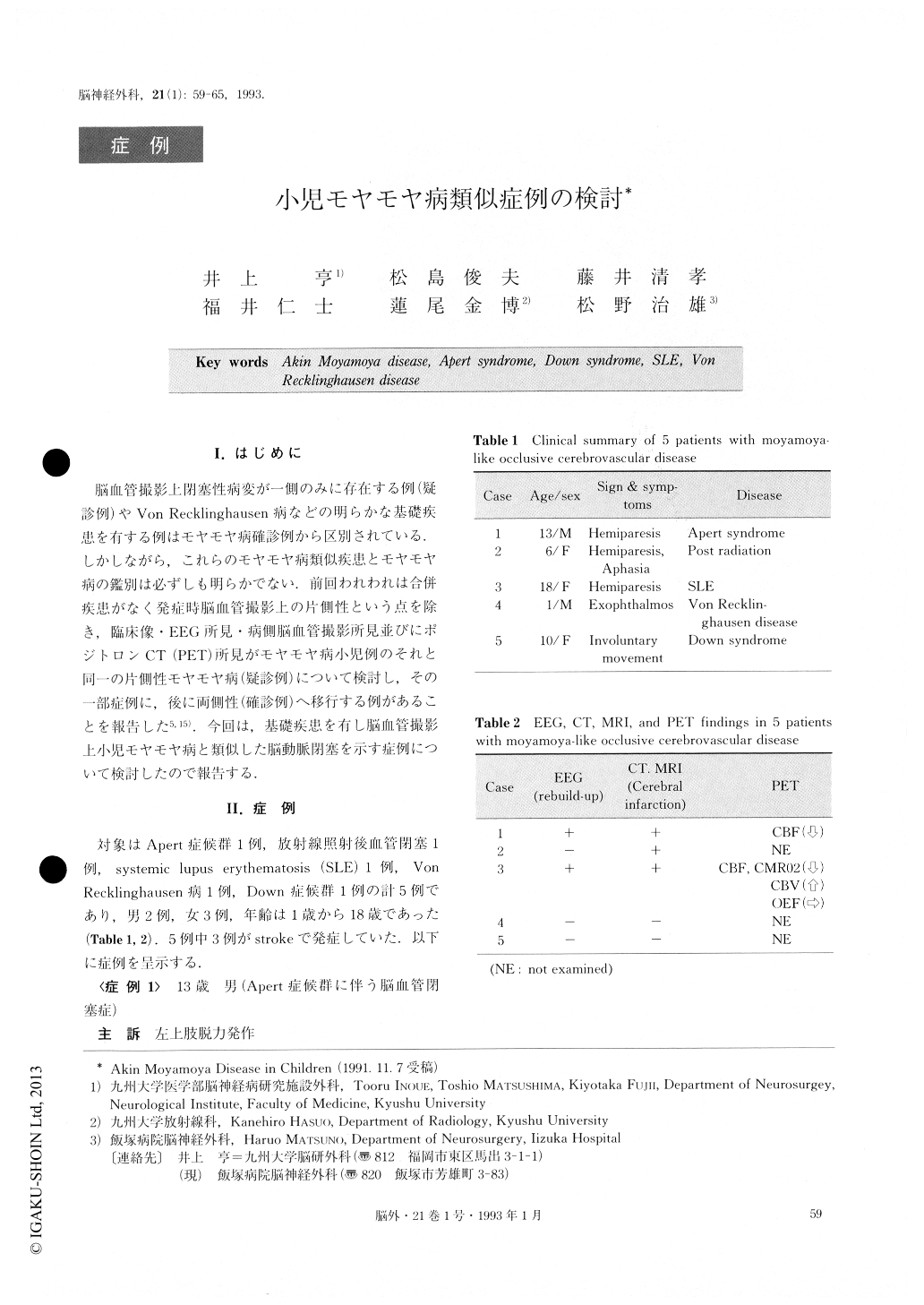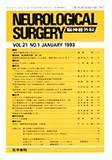Japanese
English
- 有料閲覧
- Abstract 文献概要
- 1ページ目 Look Inside
I.はじめに
脳血管撮影上閉塞性病変が一側のみに存在する例(疑診例)やVon Recklinghausen病などの明らかな基礎疾患を有する例はモヤモヤ病確診例から区別されている.しかしながら,これらのモヤモヤ病類似疾患とモヤモヤ病の鑑別は必ずしも明らかでない.前回われわれは合併疾患がなく発症時脳血管撮影上の片側性という点を除き,臨床像・EEG所見・病側脳血管撮影所見並びにポジトロンCT(PET)所兄がモヤモヤ病小児例のそれと同一の片側性モヤモヤ病(疑診例)について検討し,その一部症例に,後に両側性(確診例)へ移行する例があることを報告した5,15).今回は,基礎疾患を有し脳血管撮影上小児モヤモヤ病と類似した脳動脈閉塞を示す症例について検討したので報告する.
Moyamoya disease is characterized by bilateral in-volvement of the internal carotid arteries. The etiology of this involvement is unknown. However, we previous-ly reported two pediatric cases of moyamoya disease that progressed from unilateral to bilateral involvement. Some cases of unilateral occlusion in the carotid fork seem to have occurred at an early stage of definite moyamoya disease. In the present study, we examined five pediatric patients showing bilateral and/or unilater-al occlusion of the internal carotid artery. In each case, the etiology was known. They included Apert syn-drome, radiation therapy for pilocytic astrocytoma, sys-temic lupus erythematosis, von Recklinghausen disease and Down syndrome. The clinical manifestations, EEG, CT, MRI, PET, and angiographic findings in these pa-tients were presented in comparison with those of defi-nite moyamoya disease. This comparison led us to sug-gest that definite moyamoya disease might be included in these cases, and we emphasize the importance of precise examination in each case.

Copyright © 1993, Igaku-Shoin Ltd. All rights reserved.


